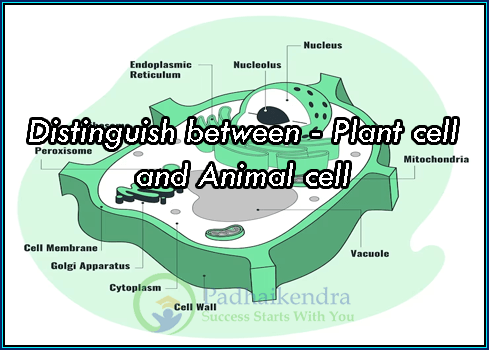Plant cells and animal cells share some similarities in terms of their basic structure and function, but they also have several key differences that distinguish them from each other. Here are some of the main differences between plant cells and animal cells:
- Cell wall: Plant cells have a cell wall made of cellulose, which provides structure and support to the cell. Animal cells do not have a cell wall, but they do have a flexible outer membrane called the cell membrane.
- Chloroplasts: Plant cells contain chloroplasts, which are organelles that carry out photosynthesis and produce energy from sunlight. Animal cells do not have chloroplasts.
- Vacuoles: Plant cells have a large central vacuole that stores water and other substances, and helps maintain the cell’s shape. Animal cells have smaller vacuoles or none at all.
- Shape: Plant cells are usually rectangular or cube-shaped, while animal cells are more rounded or irregular in shape.
- Lysosomes: Animal cells have lysosomes, which are organelles that break down and recycle cellular waste. Plant cells do not have lysosomes, but they do have similar organelles called vacuoles that play a similar role.
- Mitochondria: Both plant and animal cells have mitochondria, which are organelles that produce energy through cellular respiration. However, plant cells have more mitochondria than animal cells.
- Nucleus: Both plant and animal cells have a nucleus, which contains the cell’s genetic material. However, plant cells have a larger nucleus and may have multiple nuclei in some cases.
In summary, while plant and animal cells share some similarities, they also have several key differences in terms of their structures and functions, including the presence of a cell wall, chloroplasts, and a large central vacuole in plant cells, as well as lysosomes and a more rounded shape in animal cells.





